At Braude Engineering College, we take great pride in Mehalev, our flagship project dedicated to creating innovative engineering solutions for individuals with disabilities. This groundbreaking initiative empowers our students to apply their technical expertise to real-world challenges, making a tangible difference in people’s lives.
Spanning all ages—from toddlers to adults—and addressing a wide range of disabilities, Mehalev brings together students from our Mechanical, Electrical & Electronics, and Software Engineering departments. In close collaboration with rehabilitation centers and assistive technology organizations, they develop cutting-edge solutions that enhance mobility, accessibility, and independence.
The project has received multiple prestigious awards from the Council of Higher Education, recognizing its significant impact. More than just an academic endeavor, Mehalev bridges the gap between technology and human need, fostering social responsibility, innovation, and empathy in the next generation of engineers.
Project Name: Climb & Thrive – Adaptive Play for Every Child
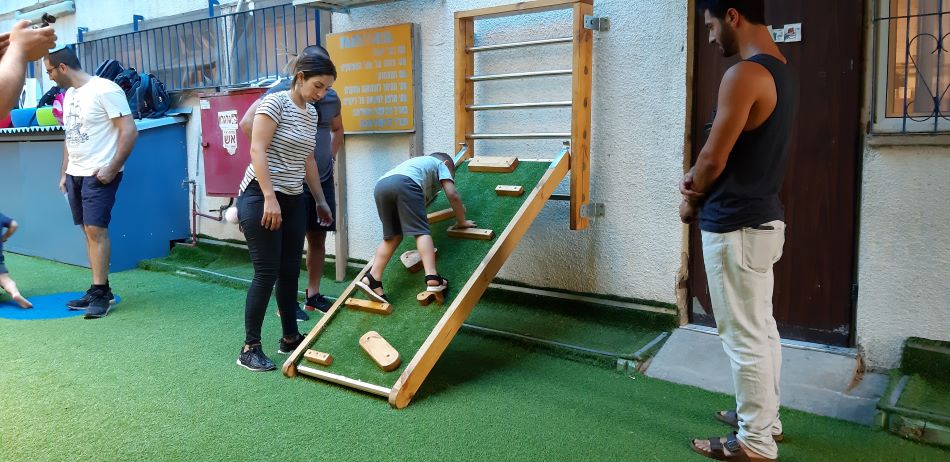
As part of the Rehabilitation Biomechanics course, students took on a meaningful challenge: developing games for HaGalil Daycare Center, part of the ALYN association. This center, located in Karmiel, provides care for toddlers aged one to three with cognitive disabilities (mainly autism), some of whom also have motor impairments. These children need specialized facilities to support both their motor and cognitive development.
The daycare’s therapy rooms include a basic wooden climbing ladder meant for motor skill exercises. However, this ladder has significant limitations—it does not allow for angle adjustments, lacks variety in grips, textures, and colors, and, as a result, many toddlers are afraid to climb it.
In response, students Maor Ganon and Matan Ben Shabbat, under the guidance of Dr. Orit Braun-Benyamin, designed and built a modular climbing wall. Unlike the old ladder, this innovative wall can be adjusted to different angles, incorporates multiple grip types, and features various textures and colors. The impact was immediate: toddlers are more eager to climb, and therapists can easily adapt the wall to suit each child’s needs.
This project is a powerful example of how creative engineering can improve the lives of children with disabilities. With the right support, we can continue developing solutions that make a real difference
Light in the Dark – A Vision-Friendly Playroom
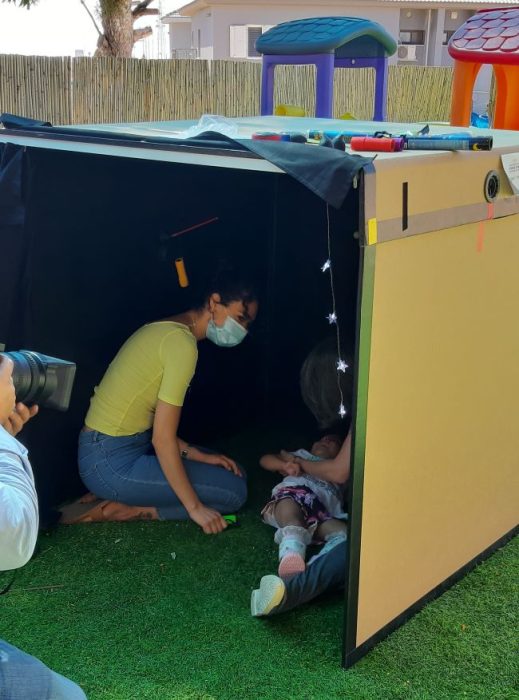
As part of the Rehabilitative Biomechanics course, students were given an inspiring challenge: developing games for the ALYN Safed Center, part of the ALYN association. This center provides care for toddlers aged one to three from Safed and the surrounding areas, many of whom have motor disabilities, and some also experience cognitive challenges. These children need specially designed environments to support their motor and cognitive development.
Students Vitaly Arshansky and Omer Sirota, under the guidance of Dr. Orit Braun-Benyamin, designed and built a dark room—a controlled space free of external stimuli such as bright light, colors, movement, and noise. This environment is especially crucial for toddlers with visual impairments, helping them make better use of their residual vision.
The dark room was constructed using rigid cardboard coated with special black paint. Inside, magnets allow therapists to attach various interactive light-based games designed specifically for this setting. These games encourage visual engagement, helping toddlers explore and strengthen their sight in a safe and stimulating way.
Given the limited physical space of the Safed center, the dark room was designed to be foldable, lightweight, and easy to move between rooms. Its impact was immediate: one toddler, lying inside, cried out in surprise when she was able to see a light game for the first time.
This project is a beautiful example of how thoughtful engineering can transform the daily experiences of children with disabilities. With support, we can continue developing innovative solutions that bring light into their world—both literally and figuratively.
One-Hand Freedom – Independent Mobility for Yuri
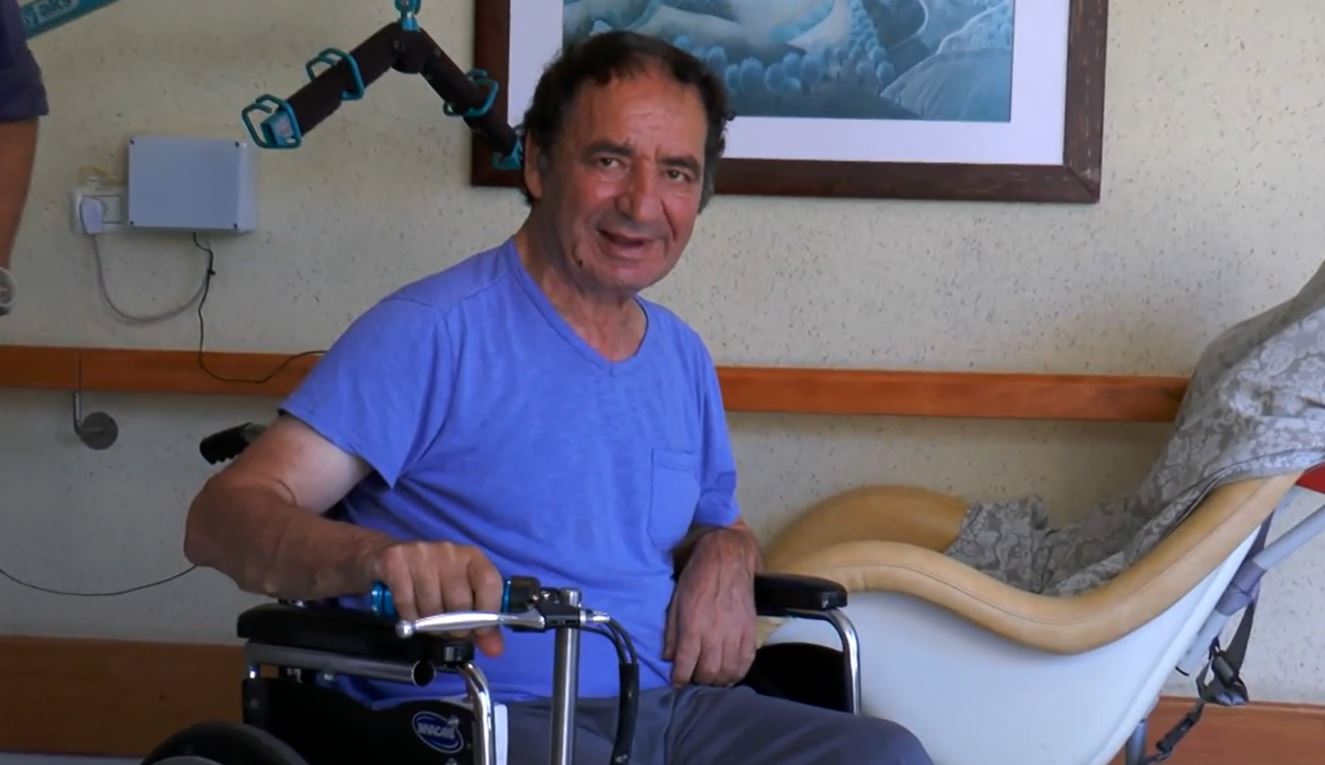
Another exciting project born from our college’s creativity and dedication. This time, the innovation was designed specifically for Yuri, an elderly resident of the Brat Elderly Care Facility in Karmiel. After suffering a stroke, Yuri was left paralyzed on his left body side. As a result, even a simple wish—like going out to the porch for a smoke—became impossible without a caregiver pushing his wheelchair.
Students Yaniv Kastiel and Shmuel Levy, both fourth-year mechanical engineering students, took on the challenge of restoring Yuri’s independence. They designed a one-handed control system for his wheelchair, allowing him to move freely without assistance. A fifth motorized wheel was added, converting the manual wheelchair into a semi-automated one. For safety, the speed was carefully limited, ensuring controlled and secure movement.
But the innovation doesn’t stop here. A new team of students is now developing a beta-version wheelchair that will allow both manual and automated control, preserving Yuri’s remaining mobility while still providing the necessary support.
This project is a perfect example of how engineering can bring dignity and freedom back to people’s lives. With continued support, we can create even more life-changing solutions for those in need.
Motion & Memory – A Therapeutic Courtyard for Dementia Care
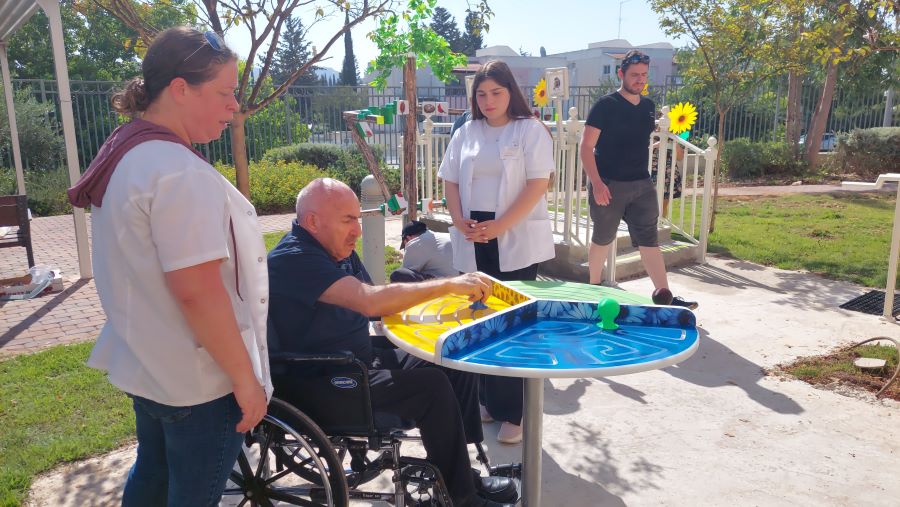
As part of the Rehabilitative Biomechanics course, students took on a meaningful project: designing active installations for an activity courtyard at the Brat Elderly Care Facility’s dementia ward. The goal was to create a space that encourages movement, cognitive stimulation, and social interaction—all crucial for residents living with dementia.
Under the guidance of Dr. Orit Braun-Benjamin, course leader, and Romy Marinberg, an occupational therapist, students worked alongside the facility’s therapeutic team to design and build the activity courtyard. The result was Four customized installations, each carefully adjusted to the motor abilities of elderly residents. These installations incorporate games that stimulate cognitive function, provide fun challenges, and encourage physical activity in a safe and engaging way.
This courtyard is more than just a recreational space—it’s a carefully designed environment where residents can maintain their abilities, improve their well-being, and enjoy meaningful moments of activity together.
Empower & Rebuild – Inclusive Workspaces for All
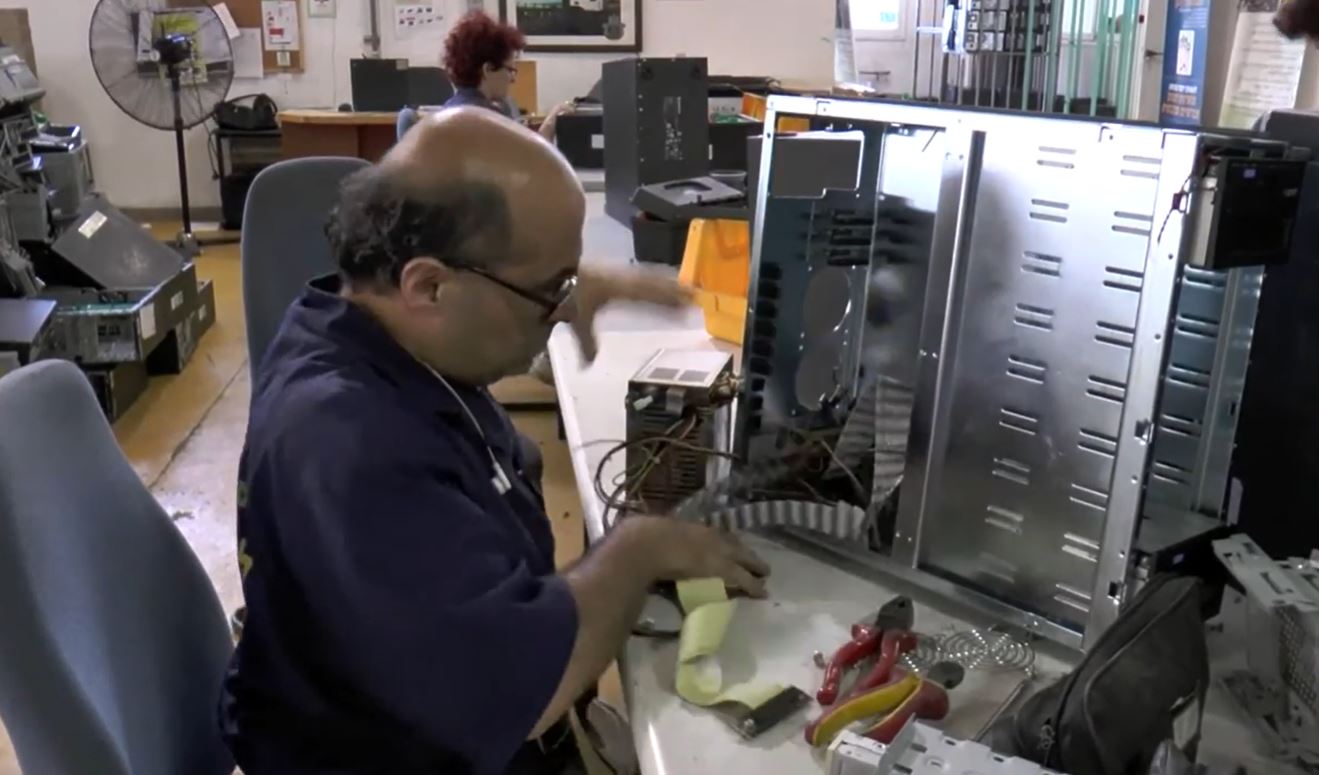
As part of the Rehabilitative Biomechanics course, students were tasked with designing assistive solutions for people with physical, mental, and emotional disabilities working at the Eco Community social factory. This unique facility provides a safe employment enviroment in electronic waste recycling, helping workers develop skills and contribute to sustainability efforts.
Students Eli Tubul and Ro’i Shitrit, under the guidance of Dr. Orit Braun-Benjamin, designed and built an adjustable worktable tailored to the diverse needs of the factory’s employees. The table can be easily adapted for sitting or standing work, ensuring ergonomic comfort for every worker. Additionally, customized features were integrated to streamline the electronic waste dismantling process, promoting efficiency, organization, and proper work habits.
By combining engineering with social impact, this project helps create a more accessible, inclusive, and productive workplace—empowering workers with disabilities while advancing sustainability.
Trauma - Digital documentation for emergency room procedures
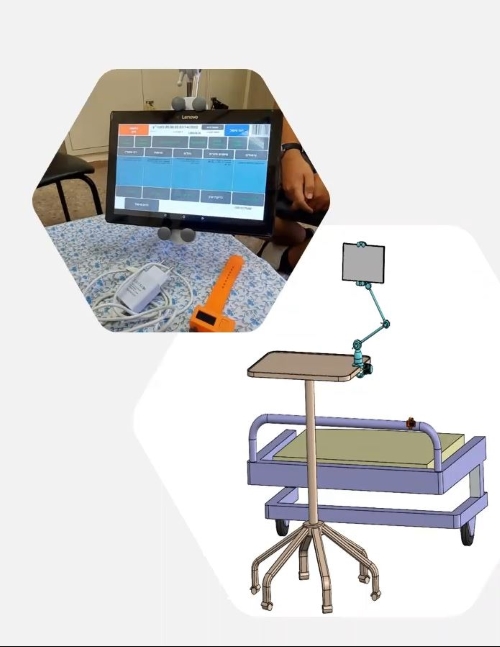
The project won first prize in a competition for outstanding projects named after Professor Yohanan Arazi, the third president of the college. Students Eilon Freundlich, Aviv Shattah, and Omri Bro joined forces and combined various fields of knowledge, and at the request of Ziv Medical Center in Safed, created for it a digital and innovative system for recording actions in the trauma room. Before, the recording was done manually, which led to errors in recording or lack of recording. The new system, which uses elements belonging to smart industry 4.0, enables documentation and storage of treatment data for a patient entering the trauma room; it includes an element for patient identification and a user-friendly interface for documenting the caregiver’s actions in real time. The need for such a system was emphasized when the hospital dealt with several mass casualty events in recent years, and after analyzing the actions taken, failures were discovered. The students hope that the system, which has already been adopted for use at Ziv Medical Center, will be marketed in the future to other emergency rooms in Israel, and after proving its effectiveness, it will be possible to invest in turning it into a commercial product and marketing it abroad as well.




